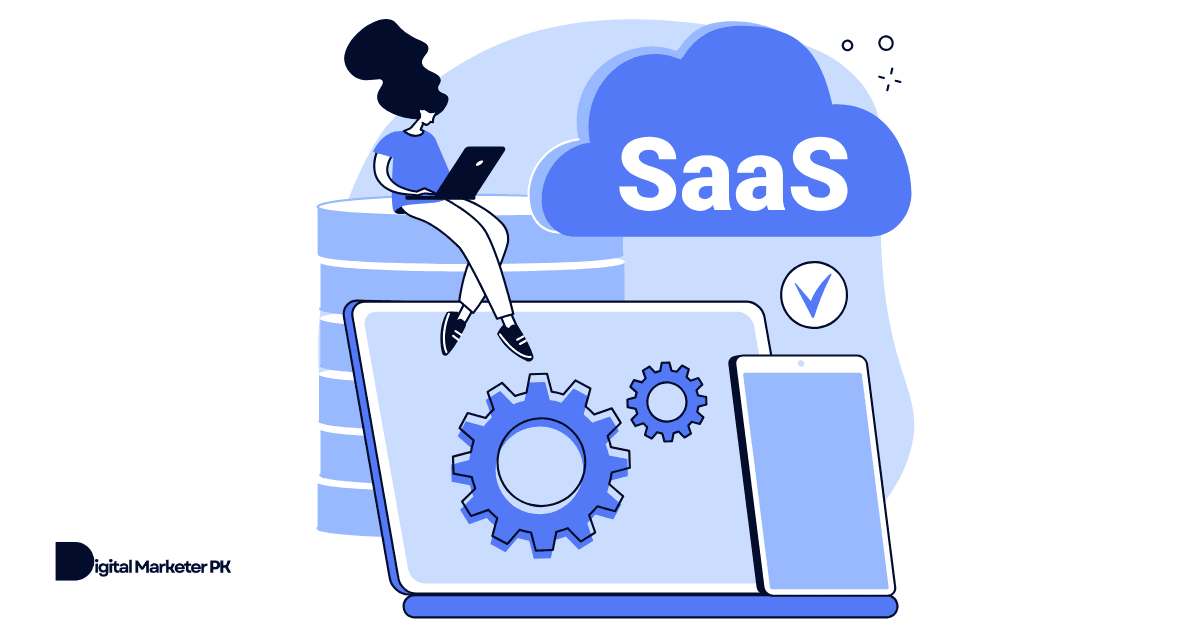Programmatic SEO for SaaS is a game-changer.
It is a powerful strategy that enables SaaS companies to scale their content creation efforts by targeting a vast array of long-tail, specific keywords.
The process involves the generation of numerous landing pages tailored to specific user queries.
Let’s explore how programmatic SEO for SaaS works, its pros and cons, and how to develop a programmatic SEO strategy for your SaaS business in 5 steps.
What is Programmatic SEO?
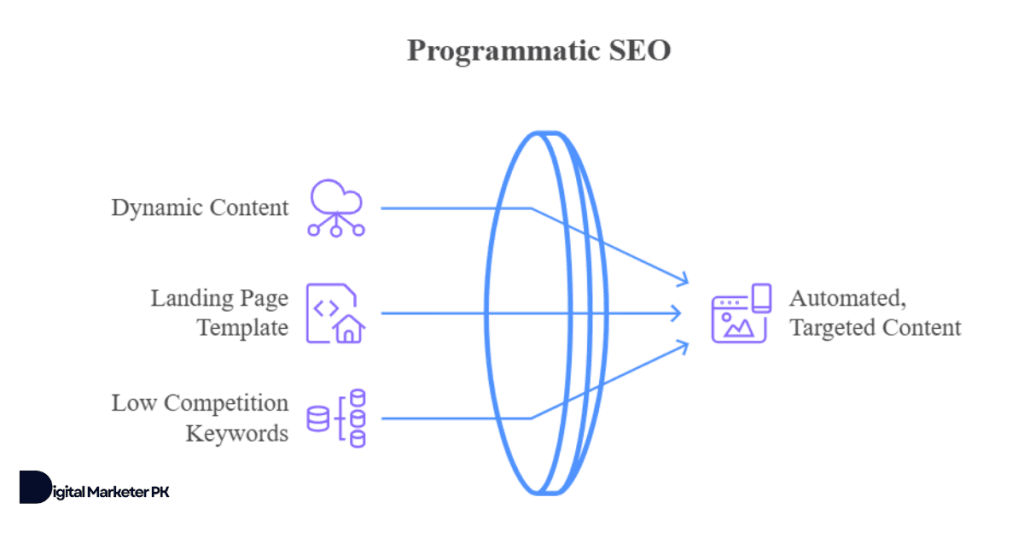
Programmatic SEO is the systematic process of creating automated content at scale using a landing page template and dynamic content.
It leverages templates and structured data to produce content dynamically that ensures consistency and relevance across all pages. Programmatic SEO helps SaaS companies address the diverse needs of their potential users by providing tailored solutions through optimized landing pages.
Programmatic SEO for SaaS Examples
Several SaaS companies have successfully implemented programmatic SEO to expand their reach.
Zapier, for instance, has created more than 800K pages for app integrations. These pages target specific keywords in this format: Tool name + integration
Here’s an example of a programmatic landing page for keyword Google Sheets integrations:
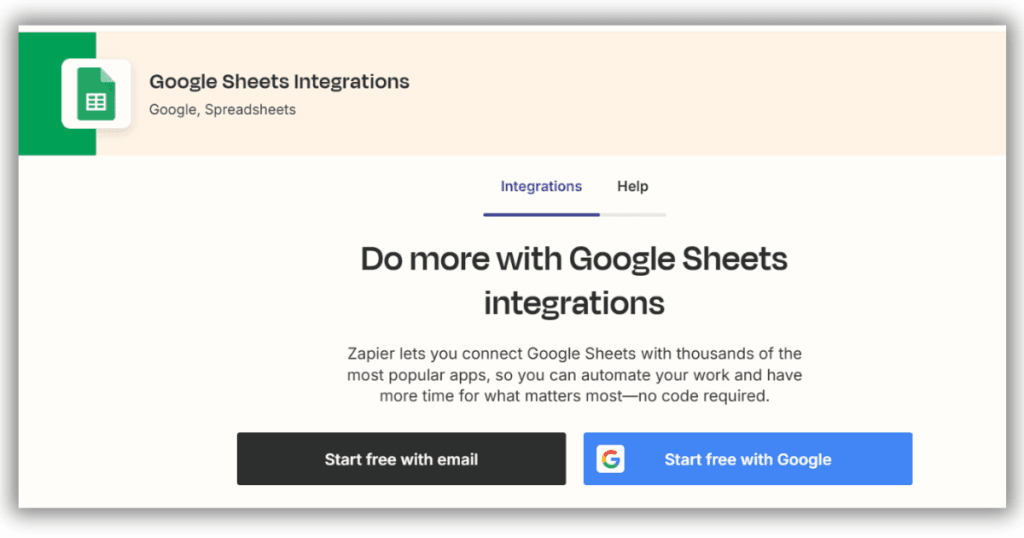
Now compare the following two pages and see the difference in the content:
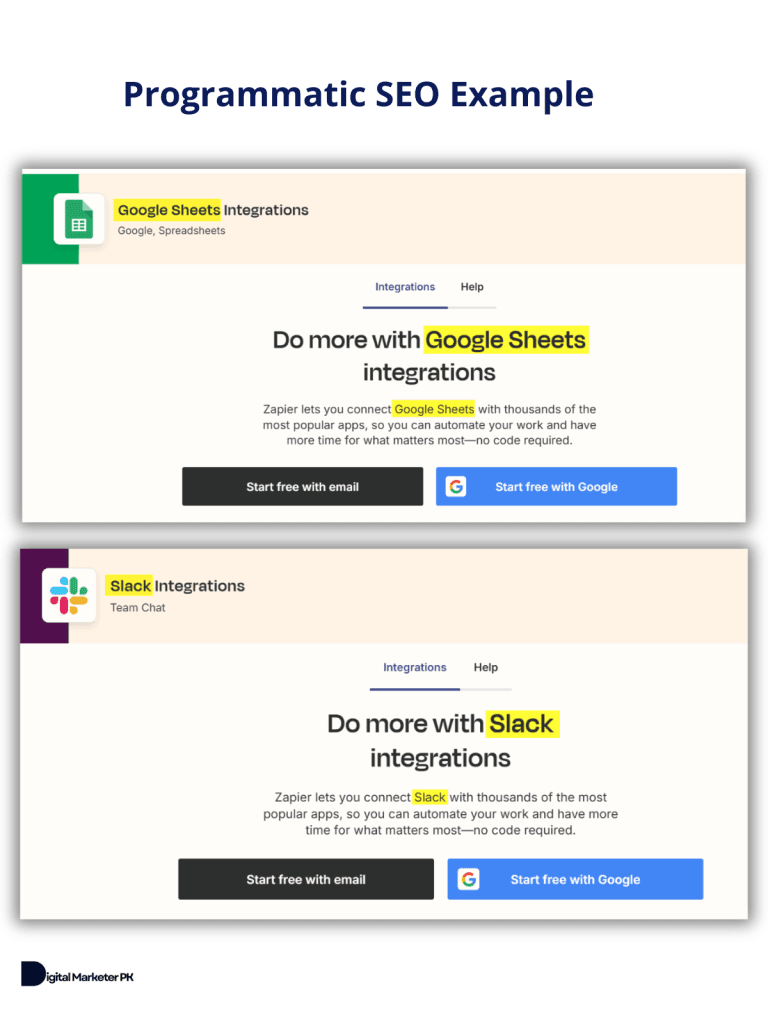
Notice how text is changed dynamically that only includes the app name – and everything else is the same.
This goes for thousands of pages that Zapier has created programmatically.
Then if you scroll down to each app’s page, you’ll notice links to additional apps for integration. All of these subpages are also created pragmatically and each landing page targets a specific keyword in the following format: Tool1 Tool2 integration
Here’s an example of two pages side by side. Notice how they look exactly the same but have keywords embedded dynamically throughout each page:
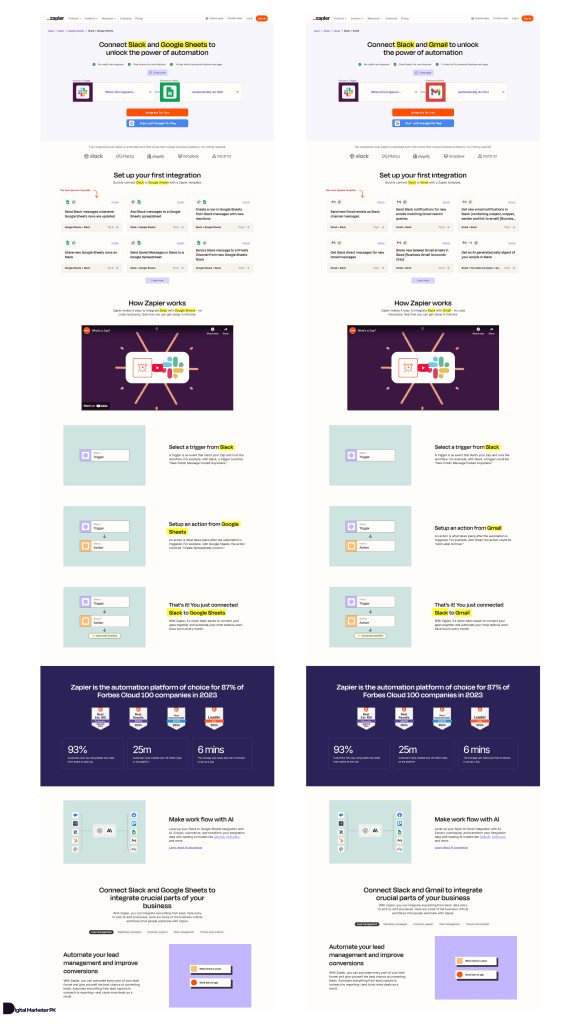
Thousands of these targeted landing pages use programmatic SEO to rank for highly specific and long-tail keywords.
The best part: They are all automated.
Other SaaS businesses that leverage programmatic SEO include:
- Canva targets keywords in the following format: X templates
- Wise targets currency conversion keywords via programmatic SEO: Currency1 to currency2
- G2 leverages programmatic SEO by generating thousands of product review pages based on the following keywords: Best X software and Tool alternatives.
Elements of Programmatic SEO
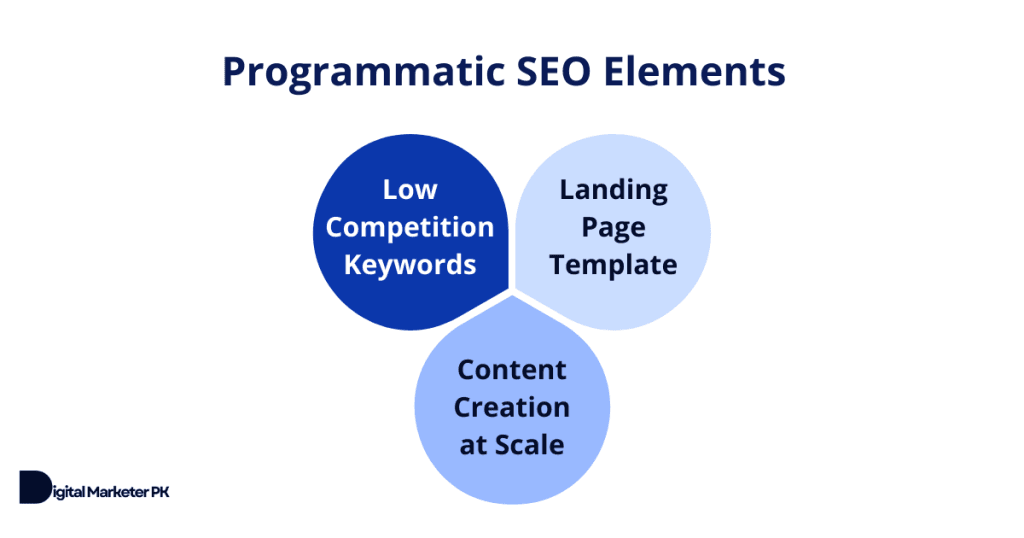
Low Competition Keywords
Identifying low-competition keywords is critical to a successful programmatic SEO strategy. These keywords allow SaaS companies to rank quickly without competing against well-established brands. Using keyword research tools like Ahrefs, SEMrush, and Google Keyword Planner can help uncover untapped keyword opportunities.
Landing Page Template with Dynamic Content
A well-structured landing page template ensures scalability and consistency across programmatically generated pages. These templates should dynamically populate with relevant content such as keyword-rich headlines, product descriptions, and testimonials. Using CMS platforms like Webflow or WordPress, combined with a database like Airtable, enables seamless automation.
Content Creation at Scale
Automating content generation is essential for scaling programmatic SEO. Businesses can achieve this by integrating AI-powered writing tools, leveraging user-generated content, or dynamically pulling data from structured sources. Ensuring content remains valuable and non-repetitive is crucial to avoid search engine penalties.
Programmatic SEO Vs. Traditional SEO
Both programmatic and traditional SEO aim to improve search engine rankings. However, they differ in their execution and scalability. Here’s a breakdown of the key differences between programmatic and traditional SEO from the perspective of SaaS businesses:
1. Content Creation Method
- Traditional SEO: Content is manually researched, written, and optimized. Each piece of content such as a blog post or a landing page is crafted individually.
- Programmatic SEO: Content is created at scale using automation. SaaS companies generate thousands of pages dynamically by leveraging structured data and templates.
For instance, a traditional SEO approach might involve writing a single, in-depth blog post about “Best CRM Tools for Startups.” In contrast, programmatic SEO would generate hundreds of pages for different variations such as “Best CRM for Healthcare Startups” or “Best CRM for Real Estate Businesses.”
2. Keyword Targeting
- Traditional SEO: Focuses on a diverse range of keywords depending on SEO strategy. You don’t stick with a specific type of keywords in traditional SEO. For instance, you will target both low competition and high competition keywords at the same time.
- Programmatic SEO: Targets thousands of long-tail, low-competition keywords in a similar format (more on this below). For instance, “best X software for Y“. If you can’t find hundreds of similar keywords in your niche, programmatic SEO might not work at all.
3. Scalability
- Traditional SEO: Limited scalability due to the manual nature of content creation. Each new page requires time and effort to research, write, and optimize.
- Programmatic SEO: Highly scalable, enabling SaaS companies to create thousands of optimized landing pages automatically.
4. Time Investment
- Traditional SEO: Requires ongoing effort to research keywords, write articles, and optimize content manually.
- Programmatic SEO: Requires a significant upfront setup (creating templates, structuring data, and automation). However once implemented, it requires less manual input.
5. User Intent and Personalization
- Traditional SEO: Pages are manually optimized for general search intent that often requires updates over time to stay relevant.
- Programmatic SEO: Allows SaaS businesses to create highly personalized content that directly addresses user queries by dynamically inserting relevant data into templates.
6. Quality Control
- Traditional SEO: Since content is manually written, quality is generally higher with a focus on uniqueness, relevance, and UX.
- Programmatic SEO: Risk of duplicate or thin content if not carefully implemented. Requires robust content structuring to maintain quality.
7. Algorithm Sensitivity
- Traditional SEO: This relies on Google’s ranking factors such as high-quality content, backlinks, and domain authority. The traffic remains mostly consistent with algorithmic tweaks provided you follow best practices.
- Programmatic SEO: More susceptible to algorithm changes if search engines identify mass-generated pages as spammy or low-quality.
Pros and Cons of Programmatic SEO for SaaS
Here’s a list of the major pros and cons of programmatic SEO you should consider before investing in it for your SaaS:
Pros
- Scalability: Automated processes enable the creation of hundreds or thousands of pages. It significantly expands your keyword coverage without requiring a proportional increase in effort. This allows SaaS companies to reach a vast audience efficiently and ensures their presence across multiple niche queries.
- Targeted Traffic: Programmatic SEO focuses on long-tail keywords and highly specific queries. The users are often looking for precise solutions to a problem which makes them more likely to convert into paying customers or subscribers.
- Cost-Effectiveness: Your SaaS company can save a lot by investing in programmatic SEO by automating content generation. While initial development costs may be high, ongoing content production becomes much more affordable compared to traditional SEO strategies.
- SEO Advantage: By targeting long-tail, low-competition keywords, SaaS companies can quickly rank in search engine results. Since most of these keywords have less competition, they provide an easier pathway to gaining organic traffic without engaging in fierce SEO battles.
- Consistency: Automated templates ensure a consistent brand voice, structure, and design. It helps you reinforce your brand identity effortlessly.
Cons
- Initial Setup Complexity: Developing the right infrastructure, setting up dynamic content templates, and integrating automation tools require technical expertise. Your SaaS business may face difficulties in structuring its database and ensuring content relevance in the absence of planning and lack of expertise.
- Quality Control: Maintaining content quality is the biggest challenge with programmatic SEO. Poorly structured or repetitive content can negatively impact user engagement and search rankings. It can, in fact, backfire badly.
- Risk of Duplicate Content: Programmatic SEO can generate pages with very similar content that might lead to duplicate content penalties. This can dilute SEO efforts and reduce search engine visibility.
- Dependence on Data: Successful programmatic SEO relies on having a robust database of structured information. If data is incomplete, outdated, or inconsistent, it can lead to subpar content that does not effectively meet user needs.
- Algorithm Sensitivity: Search engines frequently update their algorithms to prioritize high-quality, user-friendly content. If programmatically generated pages appear spammy or lack genuine value, they may be penalized and deindexed.
How to Create a Programmatic SEO Strategy for SaaS
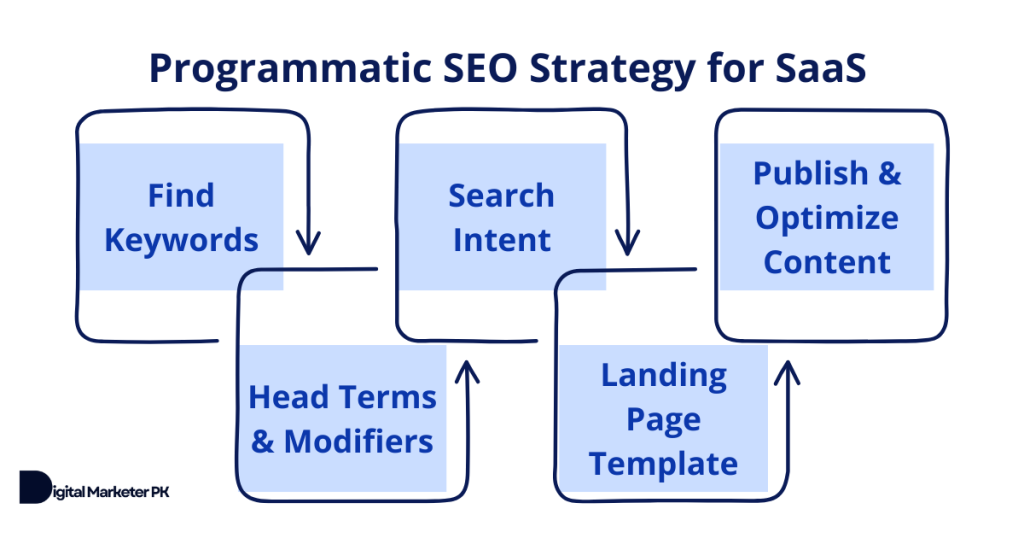
Step #1: Find Keywords
Identifying the right keywords is the foundation of a successful programmatic SEO strategy for a SaaS business.
Choosing the right keywords ensures that your programmatically generated pages attract high-intent users who are actively searching for solutions your SaaS product provides.
Here’s how to find the best keywords for programmatic SEO:
- Use Keyword Research Tools: Leverage tools like Ahrefs, Semrush, and Google Keyword Planner to find long-tail, low-competition keywords relevant to your niche.
- Analyze Competitor Keywords: Investigate what keywords your competitors rank for using Ahrefs’ Site Explorer or Semrush’s Competitive Research tools. Identify gaps and opportunities where you can create content.
- Look for High-Intent Keywords: Focus on keywords that indicate strong purchase or action intent, such as “best invoicing software for freelancers” or “CRM for small businesses.”
- Utilize Google Autocomplete & People Also Ask: These features provide real-time search insights that reveal user intent and frequently searched queries.
- Extract Keywords from User Queries & Forums: Platforms like Reddit, Quora, and niche forums contain questions that users are actively seeking answers for. Convert these queries into keyword-rich programmatic pages.
- Leverage Internal Search Data: If your SaaS platform has a search function, analyze user searches to determine what prospective customers are looking for.
For example, a SaaS company offering time-tracking software might identify keywords like “time tracking for consultants” or “best time tracker for remote teams,” which can then be used to generate targeted landing pages.
What type of keywords should you look for?
Low competition. Period.
This is because you don’t build backlinks to your programmatic landing pages. It’s practically not possible to build backlinks to thousands of automated landing pages.
You can’t.
When you target low competition keywords, you increase the chance of ranking for the majority of these keywords without backlinks.
And that’s the whole point of using programmatic SEO.
You don’t have to spend resources on targeting keywords that you will not rank for.
Stick with low competition keywords.
Step #2: Define Head Terms and Modifiers
Head terms are broad, high-volume keywords that define the core topic of your SaaS product.
A modifier helps create variations that cater to specific user needs, industries, and locations. Modifiers are added before or after the head term.
Both head terms and modifiers are essential for a programmatic SEO strategy. If you can’t find both in your niche, you can’t create a programmatic SEO strategy – unfortunately.
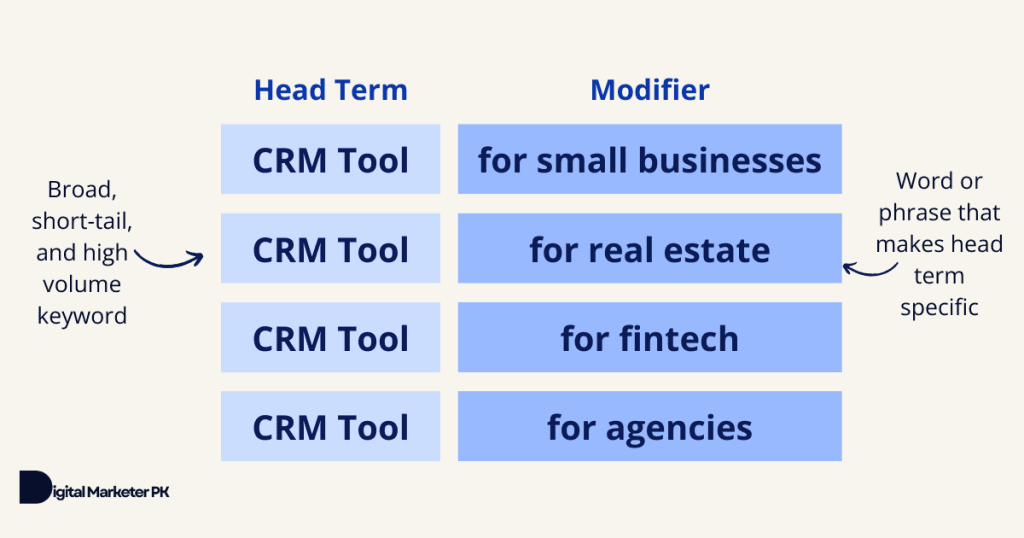
For instance, Zapier’s head term is ‘integration’ and the app name is the modifier. The keywords are in this format: Modifier + head term.
In the case of Wise, the format it uses is like this: Modifier1 + head term + Modifier2.
It’s not possible to find head terms and modifiers in all industries. It comes down to your SaaS app and target market. If you can’t find thousands of modifiers in your niche, programmatic SEO isn’t for you.
This is because head terms and modifiers allow you to generate multiple keyword-rich landing pages at a scale where the modifier is changed automatically based on the searched keyword.
Follow these steps to effectively define and use head terms and modifiers for your SaaS business:
- Select a Core Head Term: Identify a broad, industry-relevant keyword that encapsulates your SaaS product. For example, a CRM software provider might use “CRM software.”
- Add Industry-Specific Modifiers: Tailor your core keyword to different industries or use cases. This is the real hard part. Use keyword research tools and competitor analysis to find the types of keywords and look for patterns. For instance, types of modifiers a CRM platform can use include startups, small businesses, health sector, etc.
- Use Location-Based Modifiers: Target different geographical regions to reach local audiences. For example, Best CRM software in Canada or CRM software for UK businesses.
- Incorporate Feature-Based Modifiers: Highlight key product features to attract users looking for specific functionalities. For instance, AI-powered CRM software or Cloud-based CRM solutions.
- Include Intent-Based Modifiers: Consider adding words that align with different stages of the buyer journey. For instance, best, top-rated, affordable, or comparison.
The modifiers should be in thousands for an effective programmatic SEO strategy for SaaS.
Step #3: Understand Search Intent
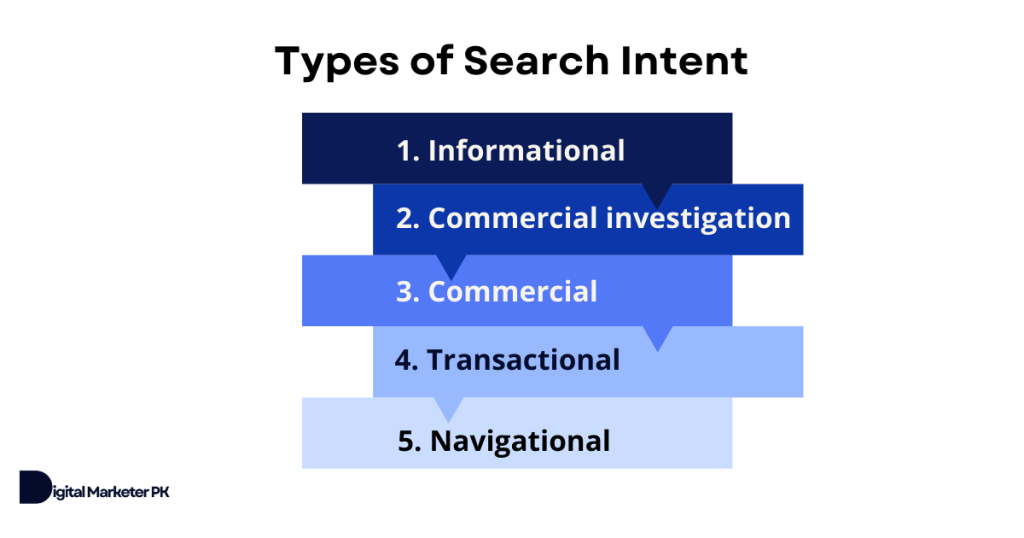
Understanding the intent behind search queries ensures your content aligns with user expectations. It is an essential part of your programmatic SEO strategy.
Search intent is crucial because it determines the type of content users expect when they enter a query. You need to categorize keywords based on the intent so that you can create targeted, high-converting landing pages.
Programmatic SEO works best for transactional and commercial search intent – mostly. This is because that’s where you can find tons of modifiers easily.
It’s hard to find modifiers for information and navigational search intents.
Here’s how to categorize and optimize for different search intent types:
- Informational Intent: Users are looking for general knowledge or answers to a question. These searches often start with “what,” “how,” or “why.” [Not suitable for programmatic SEO]
- Navigational Intent: Users are searching for a specific brand, website, or product. [Not suitable for programmatic SEO]
- Commercial Intent: Users are researching before making a purchase decision and comparing different options. For instance, the best CRM tools for small business keyword has a commercial intent. [Ideal for programmatic SEO]
- Transactional Intent: Searchers are ready to take action such as purchasing a product or signing up for a service. For example, buy CRM software for small businesses is a transactional keyword where the user is interested in transacting. [Ideal for programmatic SEO]
The idea is to make sure each page meets user expectations and fulfills the intent.
You don’t want to spend endless resources targeting a wrong intent.
Step #4: Create a Landing Page Template
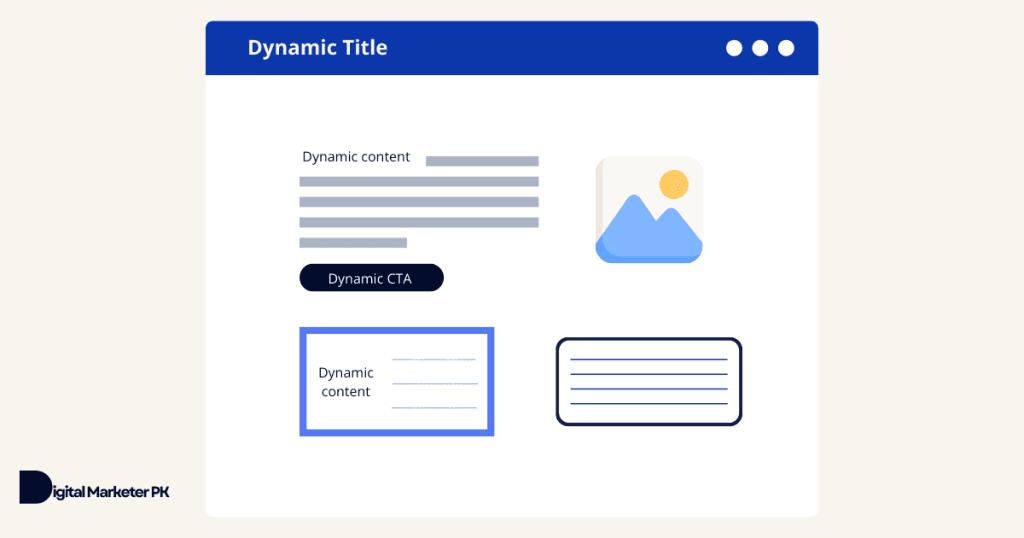
A standardized landing page template ensures efficiency and consistency. It is a core requirement of a programmatic SEO strategy.
You need to create a high-converting landing page that’ll be used as the home for your content. The content, images, CTAs, and some other parts of the landing page change dynamically.
It’s important to choose a landing page design that’s relevant to your head term and search intent.
Key elements to include in your landing page template are:
- Dynamic Headings: Auto-populated with targeted keywords.
- Engaging Introduction: Briefly address user needs and how your SaaS product solves them.
- Feature Breakdown: Use structured sections to highlight key functionalities.
- Comparison Tables: If relevant, compare your software against competitors.
- User Testimonials & Case Studies: Build credibility and social proof.
- Clear Call-to-Action (CTA): Encourage sign-ups, demos, or free trials.
You need to make sure that each landing page is unique in terms of content and keywords it targets. Use unique title, description, images, CTAs, and other key details.
Try minimizing duplicate content by increasing the number of instances where you add dynamic content.
Step #5: Publish and Optimize Content
Once the landing page template is ready, it’s time to publish it.
This is the technical part. You need help from a developer who will upload keywords with your landing page template to your CMS or server.
Depending on your CMS and tech stack, it might get complicated or it can be as simple as uploading a file.
Follow these steps to ensure smooth upload and optimization of the landing page template:
- Use a CMS with Dynamic Capabilities: Platforms like Webflow, WordPress, or a custom-built solution allow for the seamless generation of programmatic pages.
- Integrate with a Database: Utilize databases such as Airtable or Google Sheets to store structured data such as keywords, title, meta descriptions, and CTAs. These are the parts that can be dynamically injected into the landing page template.
- Automate Page Creation: Use automation tools like Zapier or Make to connect your database with your CMS and automatically publish pages as data updates.
- Optimize for SEO: Implement dynamic meta titles, descriptions, internal linking, and structured data markup to enhance discoverability and indexing.
- Monitor Performance: Regularly track page analytics using Google Search Console and Google Analytics to identify areas for improvement.
- Continuously Update Content: Maintain fresh and relevant content by periodically reviewing and updating programmatically generated pages based on user behavior, search trends, and competitive insights.
Tools for Programmatic SEO
You need access to the right platforms to successfully transfer your SaaS programmatic SEO strategy from paper to server. Here’s a list of the apps and tools that’ll make this transition less challenging:
- Webflow: A no-code CMS that facilitates the creation of dynamic, responsive web pages. SaaS companies can use Webflow to build scalable landing pages that integrate seamlessly with their programmatic SEO strategy.
- Airtable: A flexible database solution to manage and organize content data for dynamic content generation.
- Zapier: Automates the integration of databases and CMS. This makes it possible to enable real-time landing page creation.
- Clay: A web scraping tool for gathering data from competitors, user queries, and market trends to enhance programmatic SEO efforts.
- Google Search Console: It helps you track page performance, identify indexing issues, and refine keyword targeting.
Does Programmatic SEO Work?
It is risky, but it works.
Programmatic SEO can significantly enhance your SaaS company’s online presence provided you use it right.
It allows SaaS businesses to scale content production, target hundreds of long-tail keywords, and capture highly relevant organic traffic.
The success, however, depends on proper execution.
It includes high-quality content generation, structured data implementation, and continuous optimization. Importantly, you need to make sure you don’t end up with duplicate content.
Here’s what Google says about scaled content abuse in its spam policies:
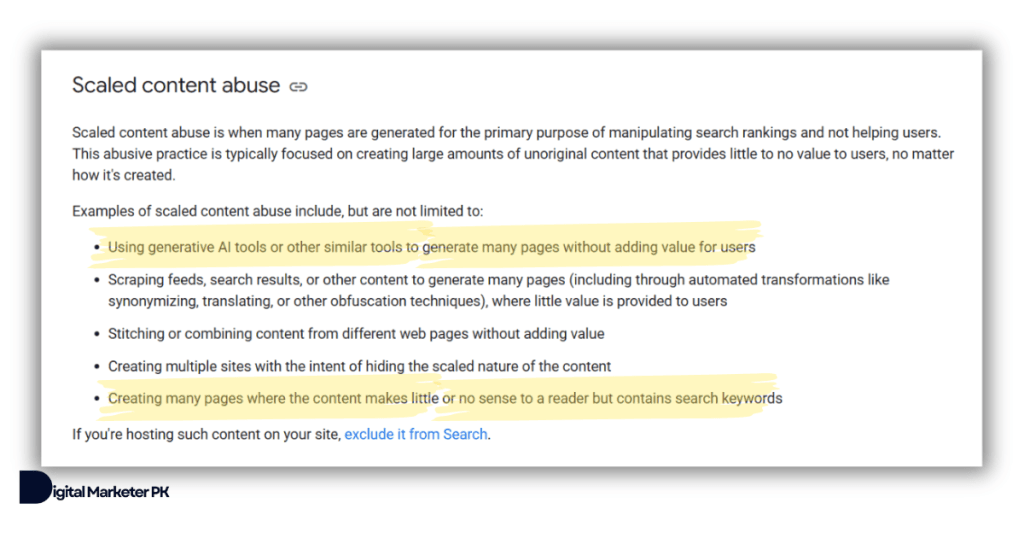
The idea is to provide value to the users by creating content that helps your target audience.
SaaS companies like Zapier, Wise, and Canva are ranking at the top with programmatic landing pages despite having little unique content on each page.
This is because their pages are delivering value to the users.
When someone visits Wise’s currency conversion page, the user leaves satisfied because the calculator helps the user convert the desired currency and check its rate.
If you are solving a problem and helping users with programmatic SEO, you are good to go.
However, if you aim to create thousands of similar pages with no value, you might get your SaaS site in trouble.
It can lead to duplicate content issues, low-quality pages, and potential search engine penalties.
Focus on helping users with programmatic SEO – and nothing else.
And it will work.
Final Words
Programmatic SEO for SaaS companies is a scalable and efficient method to dominate the SERPs.
It has its challenges in the form of high setup costs, technicalities, and thin content issues, but if you manage to execute it smartly, you can outperform your competitors.
Programmatic SEO provides your SaaS business with a massive competitive advantage.
If you have the resources to do it, go for it.
It’s a game-changer in the world of SEO.



